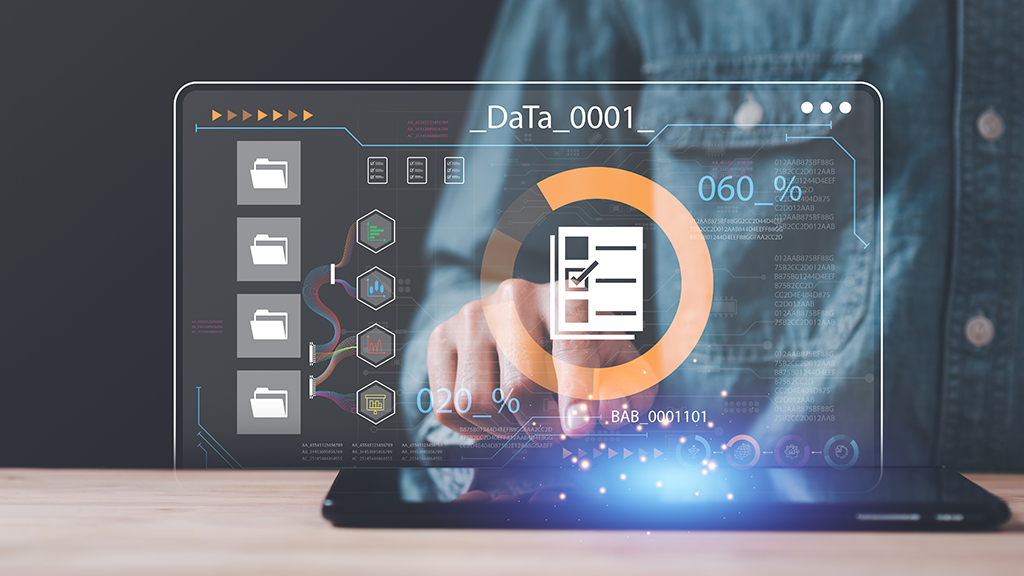
Global Content Lead - Tech & Consulting
Subscribe to the newsletter
Lately, there has been a growing need for data and analytics, which has increased the importance of cloud computing. This has enabled businesses to process large amounts of data in real time and accurately make more informed decisions.
The future of computing lies in edge and cloud infrastructures. This trend has sparked the edge computing vs cloud computing debate, making enterprises question what’s right for their business.
Research suggests that the global edge computing market is anticipated to achieve a value of 274 billion U.S. dollars by 2025. Likewise, the size of the worldwide cloud computing market reached a valuation of $569.31 billion in 2022. It is forecasted to expand from $677.95 billion in 2023 to an impressive $2,432.87 billion by 2030.
The growing use of IoT devices has brought attention to the debate between edge and cloud computing. Organizations need to comprehend the key differences between these two models to find the right balance between local data processing and utilizing the cloud’s powerful computational abilities.
This blog will delve into the definitions of edge and cloud computing, how they function, and provide insights to help businesses determine which model best fits their unique technological requirements and goals.
What is edge computing?
Edge computing is a decentralized IT architecture that brings computation. Data storage should be closer to the location where it is needed, even near the “edge” of the network. In simple words, edge computing moves some portion of data. And compute resources out of the centralized data center and closer to the data source.
Edge computing distributes tasks to local devices, such as routers and even end-user devices.
This approach ensures that data processing takes place where data is generated. Only the computing work’s results are returned to the data center for review. This departs from traditional cloud computing models, where data processing occurs in centralized data centers.
How does edge computing work?
Edge computing moves computational tasks and data processing closer to the data source or end-user device. This involves deploying edge servers or devices near the generated data, allowing faster processing and response times.
Instead of sending all data to a centralized cloud server for processing, edge devices perform preliminary analysis, filtering, and processing, only sending relevant or summarized data to the cloud. This approach optimizes network bandwidth, reduces latency, and enables faster decision-making.
What is cloud computing?
Cloud computing refers to delivering various computing services over the Internet, including storage, processing power, databases, networking, software, and more. It allows individuals and organizations to access and use these resources without the need to own or manage physical infrastructure.
The term encompasses all the technology responsible for the cloud’s functionality. This comprises servers, operating systems, networking, and any other required IT infrastructure. The cloud eliminates the burden of complex data processing and procedures by transferring them to massive computer clusters located in a distant part of cyberspace.
How does cloud computing work?
Cloud computing operates through a network of remote servers hosted in data centers. These servers are connected to the Internet and are responsible for providing various services to users.
Users can access these services and resources over the Internet using computers, smartphones, tablets, and more. This eliminates the need for individuals or organizations to own and maintain physical infrastructure, allowing them to use resources on demand and pay only for what they use.
Key differences between edge and cloud computing
As industries evolve, the choice between cloud and edge computing becomes more complex, with businesses evaluating trade-offs in responsiveness, data privacy, and resource management.
Following are a few key points of comparison:
1) Latency and response time
Edge computing and cloud computing display distinct latency and response time differences. Edge computing holds a competitive advantage by processing data near the data source or end-users, resulting in rapid response times. This feature proves pivotal for applications requiring real-time interactions, such as autonomous vehicles or industrial automation.
Conversely, cloud computing may introduce higher latency due to the necessity of data transit to and from centralized data centers, potentially leading to delayed responses in time-sensitive scenarios.
2) Bandwidth usage
Edge computing optimizes bandwidth by executing local data processing, transmitting only pertinent or summarized data to the central cloud. This approach minimizes data sent over the network and efficiently utilizes bandwidth.
In comparison, cloud computing necessitates sending larger data volumes to remote servers for processing, which can contribute to elevated bandwidth consumption.
3) Data privacy
Edge computing strongly emphasizes data privacy by conducting local processing, thus reducing the need to transfer sensitive data across public networks. This heightened security is particularly advantageous for applications that handle confidential information.
Conversely, cloud computing raises potential privacy concerns as data traverses networks and resides on remote servers operated by third parties.
4) Scalability
Edge computing offers a form of distributed scalability by adding more edge devices, although the physical limitations of the edge nodes may constrain this scalability.
In contrast, cloud computing boasts robust scalability, enabling the seamless provisioning of resources as required. This scalability advantage often operates without the constraints associated with physical hardware.
5) Cost considerations
Edge computing may involve higher upfront investments in deploying and maintaining edge devices. However, this upfront cost may translate into long-term savings through reduced data transfer expenses and optimized resource utilization.
Conversely, cloud computing adheres to a pay-as-you-go model, minimizing initial investments but potentially incurring higher operational costs as resource scaling ensues.
6) Reliability
Reliability is a distinguishing factor in comparing edge and cloud computing. Edge computing bolsters reliability by facilitating local processing even when central cloud connectivity is disrupted.
This characteristic ensures continued operation in remote or intermittently connected environments, making it particularly valuable for mission-critical applications. In contrast, the reliability of cloud computing hinges on network connectivity; any downtime or disruptions can impact service availability and data accessibility.
It is vital to recognize that edge and cloud computing need to be open alternatives. Instead, they can be strategically integrated in a hybrid approach.
7) Use cases and examples
Organizations often tailor their strategies based on specific use cases, harnessing edge and cloud resources to achieve optimal performance and efficiency according to their unique requirements. Some of these use cases include:
Use cases of edge computing:
- Smart cities and IoT devices: Edge computing plays a pivotal role in smart city initiatives by enabling real-time processing and analysis of data generated by numerous IoT devices. Streetlights, sensors, surveillance cameras, and other connected devices can process data locally, allowing city authorities to manage traffic flow, monitor air quality, optimize waste management, and enhance overall urban infrastructure efficiency.
- Real-time analytics in manufacturing: Edge computing enables immediate data analysis from industrial sensors and equipment in manufacturing environments. This empowers manufacturers to monitor production lines in real time, detect anomalies, predict equipment failures, and optimize production processes on the spot, minimizing downtime and ensuring consistent product quality.
- Remote locations with limited connectivity: Edge computing is advantageous in remote or rural areas with limited or unreliable network connectivity. Applications like remote monitoring of oil rigs, environmental monitoring in forests, or disaster response in off-grid regions benefit from local data processing, ensuring timely actions and decisions even when traditional communication is challenging.
Use cases of cloud computing:
- Large-scale data processing and analytics: Cloud computing excels in processing massive volumes of data for tasks such as data warehousing, business intelligence, and data mining. Organizations can leverage cloud-based resources to run complex analytics algorithms on extensive datasets, extracting valuable insights and patterns to inform business decisions.
- Software as a Service (SaaS) applications: Cloud computing enables the delivery of software applications over the internet, eliminating the need for users to install and maintain software locally. Users can access SaaS applications like customer relationship management (CRM), email, collaboration tools, and office suites from any device with an internet connection, enhancing flexibility and accessibility.
- Collaborative tools and cloud-based storage: Cloud computing is integral to collaborative work environments. Cloud-based storage and collaboration tools facilitate seamless file sharing, real-time document editing, and remote teamwork. Teams can work on projects simultaneously, access documents from various locations, and maintain version control, streamlining communication and productivity.
Ultimately, businesses must weigh factors like latency and scalability in the edge vs. cloud computing debate. And cost to determine the most suitable approach for their specific applications.
Edge computing vs cloud computing- Choosing the right model for your business
The choice between edge computing and cloud computing represents a crossword for businesses charting digital courses. Each model brings its own arsenal of strengths to the table. Edge computing may be better if your business relies on real-time interactions, low latency, and data privacy. If your business requires scalability, large-scale data processing, software delivery, cloud computing offers the flexibility and resources you might need.
Additionally, a hybrid approach that combines both models can provide a more balanced solution, allowing you to capitalize on the strengths of both models for different aspects of your operations. Carefully assessing your unique requirements can help you solve the cloud vs edge computing dilemma.
So, are you ready to explore the realms of cloud and edge computing? Explore the right blend of edge and cloud solutions. If you have questions about implementation, our expert team at Confiz is here to help.
Contact us at marketing@confiz.com to get started with a consultation that can help propel your business to the forefront of technological innovation.



